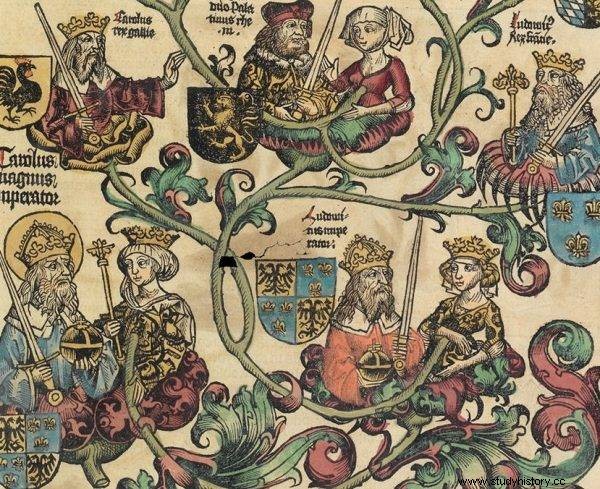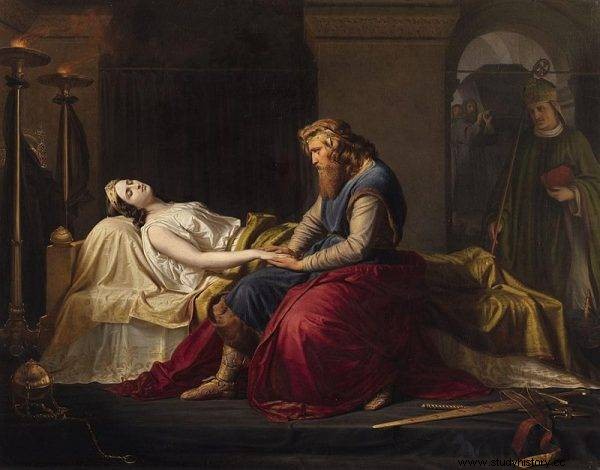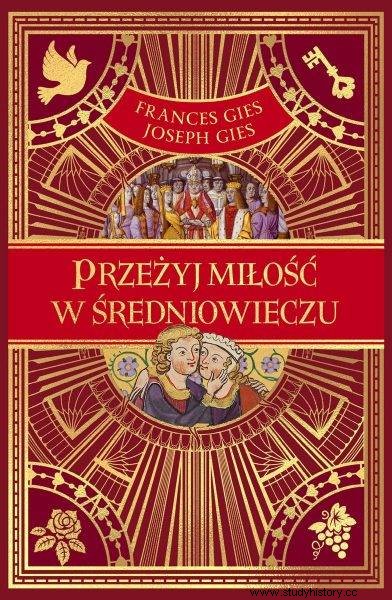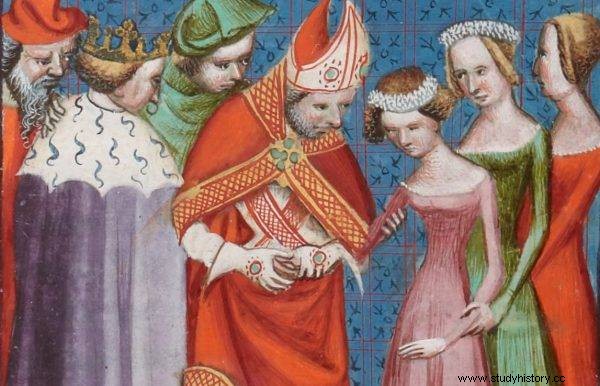Roman law allowed divorce. It wasn't until the Middle Ages that they were strictly banned - with a few exceptions. Why? But when was it possible to part?
There were several serious consequences in making marriage sacramental. Polygamy and cohabitation have become unacceptable for Christians. Finally, in accordance with the content of the Gospel of Matthew, divorce was not approved: "So what God has joined together, let no man separate" (Matthew 19:6).
In this regard, the Church came into sharp conflict with Roman law, which, written in the Sixth century in the Justinian Codex, remained in force for a long time in most parts of the empire. Constantine the Great and subsequent Christian emperors tried to limit the former freedom in divorce but they didn't try to bear it. However, the views of the Church, especially on gender equality, represented a "creative innovation" in legislation.
The indissolubility of marriage ties
Augustine rejected any arguments in favor of permitting divorce recognized by secular law of the time, such as the prolonged absence or imprisonment of a spouse. He was "the one who finally developed the theory of the irresolvability" of marriages (...), although another of the Fathers of the Church, Saint Ambrose (340-397), Archbishop of Milan, perhaps most clearly presented the Church's position on divorce to Christians :"Do not seek divorce, because you must not marry another while your wife is alive. ... It is a crime of adultery. […] And the more serious when someone wants to validate his sin. ”

photo:Hartmann Schedel / public domain Church synods in the first two centuries of the Middle Ages were not too much involved in fighting divorce
However, the Church recognized divorce as a venial sin, not a mortal one . In short, neither the Church nor Roman law found a solution to the problem of repeated marriages by victims of marital infidelity - unlike barbaric laws, where adultery committed by men was irrelevant and unfaithful women were punished by death ...
.Exceptions to the rule
While the Church's doctrine of the indissolubility of marriage was in direct contradiction to Roman and Germanic divorce laws , it was the church synods in the first two centuries of the Middle Ages that did not engage much in the fight against divorce, and the efforts made were ineffective. One of the legal formulas of that time began with an open statement:
As there was no love between so-and-so and his wife in the eyes of God, but disagreement prevailed and therefore they could not agree in anything, they both wanted to part, which they did > . [...] They decided that each of them would be allowed to enter the service of God in the monastery or contract a new marriage (...) .
The Synod of Agde (AD 506) decreed that a man cannot send his wife back without first presenting the case to the bishop's court ; this provision was largely ignored. Later synods (in Compiègne in 757, in Verber in 758 or 768) identified some justifiable grounds for divorce :leprosy, plotting to kill a spouse, wife's entry into law, spouse's enslavement (...).

Charlemagne, under pressure from the bishops, forbade divorce
Teodor's penitentials outright precluded the woman from divorcing her husband even in the event of blatant betrayal on his part, except when he wished to enter a monastery; legally contracted marriages could not be broken without mutual consent.
Nevertheless, in the first marriage, each of the partners could grant the spouse permission to go to the monastery, and the man who was dismissing his wife and remarrying was only exposed to the necessity of long-term repentance. If the woman could prove that her husband was impotent, the marriage was dissolved and she was allowed to remarry. If the wife abandoned her husband, "despising him" and refusing to return to him, the husband should have been patient for five years, after which he was allowed to remarry "without the bishop's consent" (...).
Who introduced the divorce ban?
In his youth, Charlemagne dismissed a certain concubine to enter into a political marriage with the Lombard princess, and a year later divorced the latter, apparently because she was sterile. But in the eighties and nineties of the eighth century , under pressure from the bishops, he introduced strict laws prohibiting divorce for any reason . Then he set the example himself, marrying three more times and living monogamously with each of his wives until their deaths (although in his old age he sought solace in four concubines).

The text is an excerpt from the latest book by Frances and Joseph Gies, "Experience love in the Middle Ages", which has just been published by the Znak Horyzont publishing house.
His son, Louis I the Pious, not only supported the fight against divorce, but did not even want to divorce his second wife, Judith of Bavaria, when she was accused of adultery with her husband Dhuoda Bernard of Septimania. Church synods during his reign forced a new rule that infidelity was insufficient as a reason for divorce.
In the second half of the ninth century, the divorce of a royal couple led to the first great confrontation between the king and the Church in the Middle Ages, and this issue had repercussions for the institution of Christian marriage and for the whole of political history.
Reason will always be found
In 858 Lothar (Chlothar) II, king of Lorraine, decided to divorce his barren wife Teutberg in order to marry his former concubine, Waldrada, who had previously bore him children; he wanted to recognize them as his rightful offspring. In seeking divorce, he accused Teutberga of not only not being faithful to him, but even of incest. He claimed that before they got married, she had had sexual contact with her brother Hubert, a prelate of dubious reputation.
The accusations made by Lotharo were hard to believe for two reasons. He waited two years before appearing with them, and officially confirmed the bride's deflowering before the wedding , giving her the traditional Morgengabe. He explained it like this:Hubert, he said, had had anal intercourse with his sister without disturbing her hymen.
Lotar did not hesitate to make another, sophisticated accusation:despite the contraceptive nature of her relationship with Hubert Teutberg, she was supposed to conceive a child through secret practices and then terminate the pregnancy (...). Teutberg, claiming that she was innocent, demanded ordinations (the so-called God's trial), during which her master heroically immersed himself in the boiling water and got out of it unscathed. Not wanting to accept the defeat, Lothair imprisoned his wife until she agreed to separate (...).
The first high-profile divorce ever
In the first such a highly publicized royal divorce case, the most important, what was commonly understood, turned out to be the political motive, i.e. the need to provide the monarch with a rightful heir. The real stake was the existence and survival of the Lorraine kingdom of Lorraine. His uncles, Charles II the Bald and Louis II the German, rulers of the remaining lands of the divided empire of Charlemagne, were plotting the partitions of Lorraine (...).

photo:public domain In accordance with the content of the Gospel according to Saint Matthew, divorce was not approved:"So what God has joined together, let no man separate"
Synod [in Aachen in 862 - ed. Ed.] annulled the marriage due to Teutberg's incest, and Lothar married and crowned Waldrada. Even so, he was apparently still unsure whether it was lawful, as the next synod, at Metz in 863, had invented a whole new legal basis to justify its actions. It was announced that Lothar's relationship with Waldrad was legally contracted from the beginning , and Lotar was forced by Hubert to marry Teutberga, "although he did not want it".
Then Teutberg filed her own lawsuit in response. She appealed to Pope Nicholas I the Great (...). Nicholas called his own synod, canceled the decisions of the synod in Metz, dismissed those church dignitaries who had announced them, and ordered Lothair to take Teutberga back (...).
Lothair did not give up on his intentions. (...) The litigation lasted eight years. As further reasons for seeking divorce, Lothar cited incest, previous marriage, his disagreement with the wedding, his wife's infertility, and her alleged desire to enter a convent. Each of these arguments was categorically rejected by the Church. The stalemate was only resolved when both Waldrada and Teutberg went to the monastery (...).
New basic social cell
Hinkmar [Archbishop of Reims, an outstanding authority in the field of canon law, who played an important role in the divorce of Lothair and Teutberg - ed. ed.] rejected all grounds for divorce formerly recognized by both secular and canon law: the wife's illness and infertility, her witchcraft, imprisonment or taking up a monastic life by one of the spouses, finally:adultery.

The only recognized reason for dissolving the marriage was therefore its unlawful contracting.
Many of Hinkmar's contemporaries believed that a man who did not commit adultery (such as Boson) had the right to divorce his faithless wife and remarry, but Hinkmar, on the contrary, believed that adultery did not break the marriage . He pointed to the analogy with the sacrament of baptism, which was not invalidated by the sin committed by the baptized person; appropriate penance restored the blessing that resulted from receiving this sacrament. Likewise, an unfaithful person could atone for their wrongdoing and reconcile with their spouse. - in other words, proof that it was not actually concluded.
In addition to influencing divorce, the Hinkmar treaty also contributed to the gradual transformation of the idea of marriage - a departure from the contractual nature of the family alliance with partial transfer of property - towards a more personal and sexual one - towards mutual consent of the bride and groom to sexual intercourse. At the same time, in the social dimension, they became more important than the families and relatives of the bride and groom as the new basic social unit.
Source:
The text is an excerpt from the latest book by Frances and Joseph Gies, "Experience love in the Middle Ages", which has just been published by the Znak Horyzont publishing house.
